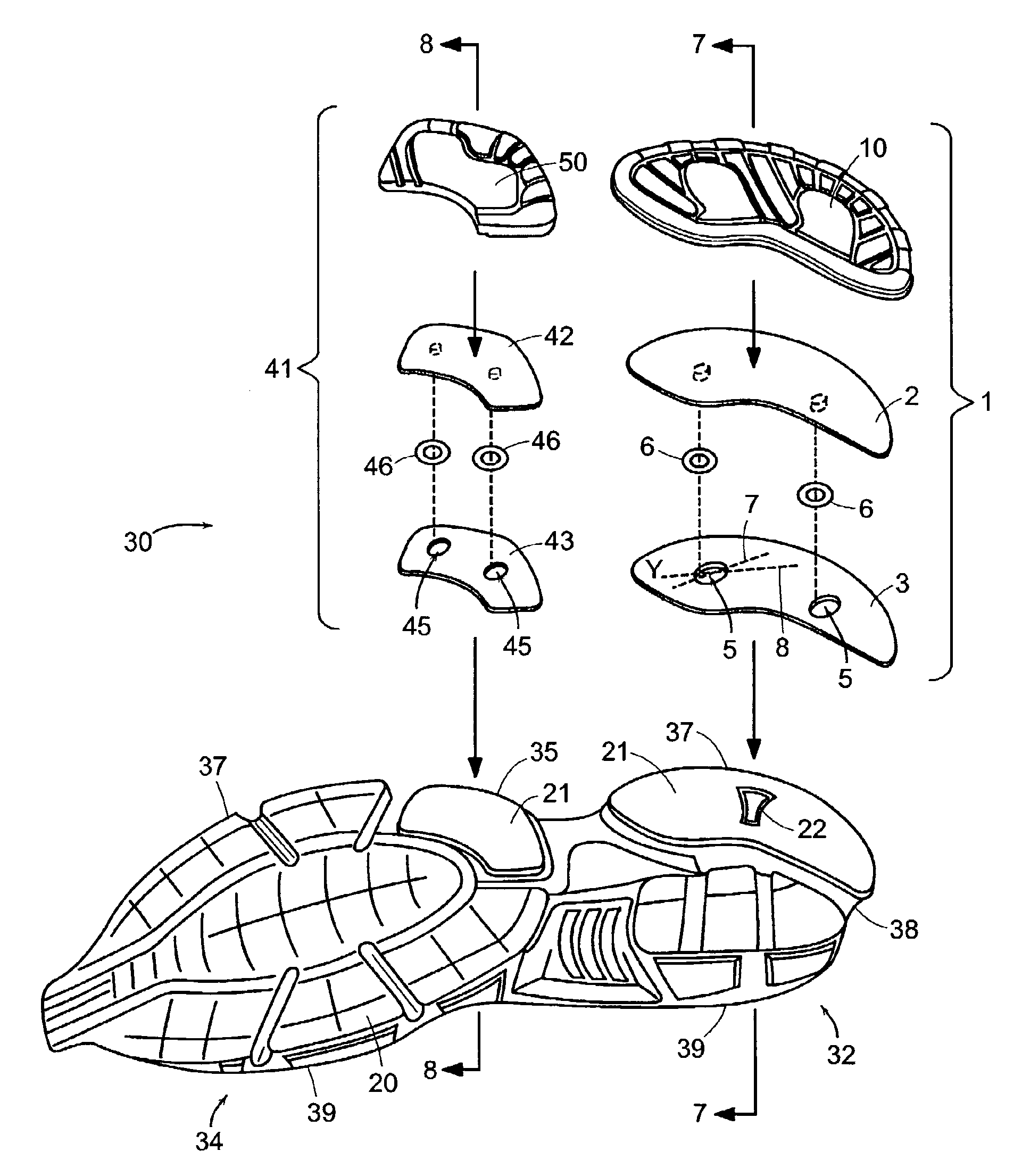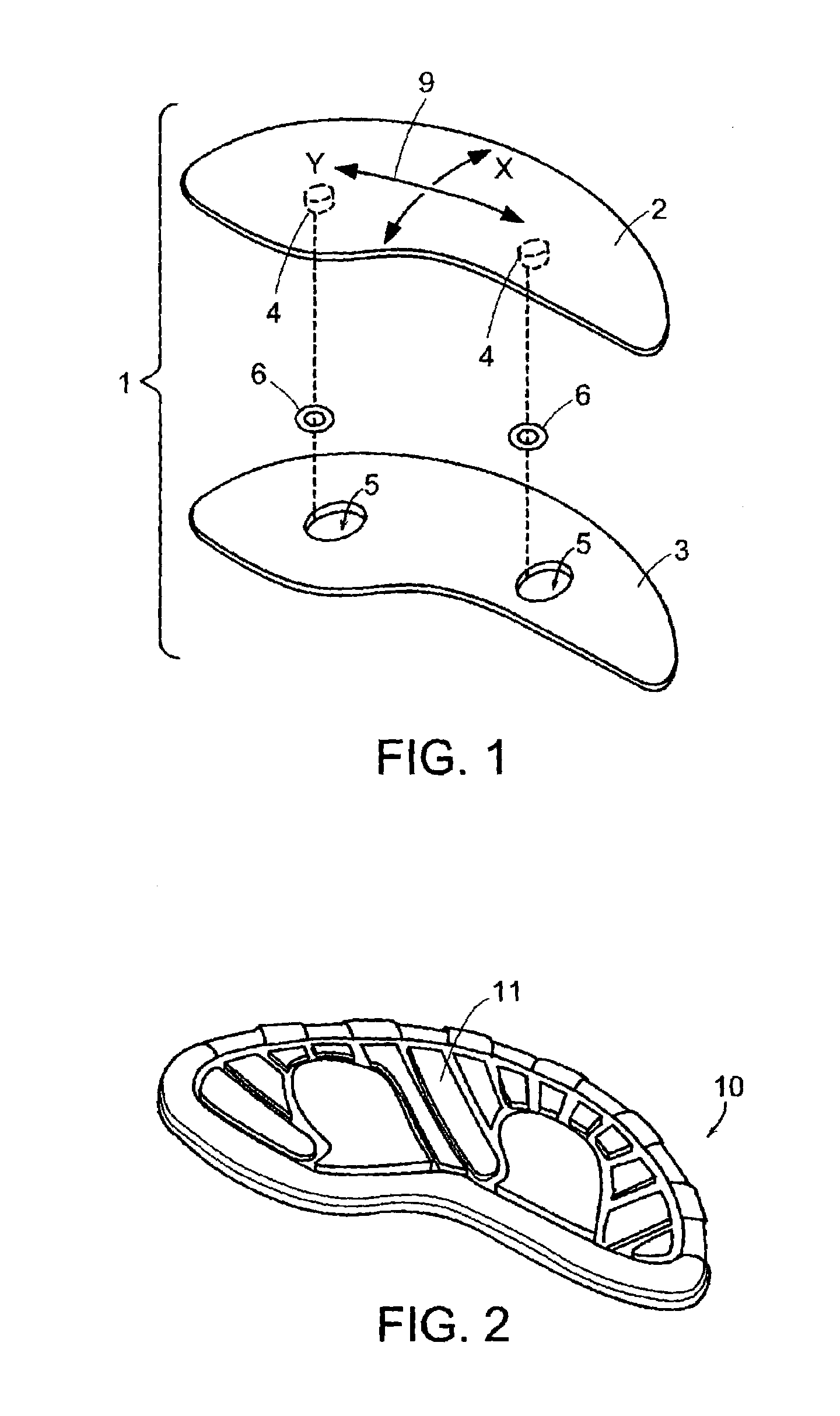Full bearing 3D cushioning system
a full bearing, cushioning technology, applied in the direction of shoes, applications, footwear, etc., can solve the problems of insufficient cushioning, premature fatigue of joints and muscles, and discomfort of running on asphalt roads, so as to reduce the amount of force acting on the athlete and the effect of reducing friction
- Summary
- Abstract
- Description
- Claims
- Application Information
AI Technical Summary
Benefits of technology
Problems solved by technology
Method used
Image
Examples
Embodiment Construction
[0035]Embodiments of the present invention are described below. It is, however, expressly noted that the present invention is not limited to these embodiments, but rather the intention is that modifications that are apparent to the person skilled in the art are also included. In particular, the present invention is not intended to be limited to soles for sports shoes, but rather it is to be understood that the present invention can also be used to produce soles or portions thereof for any article of footwear. Further, only a left or right sole and / or shoe is depicted in any given figure; however, it is to be understood that the left and right soles / shoes are typically mirror images of each other and the description applies to both left and right soles / shoes. In certain activities that require different left and right shoe configurations or performance characteristics, the shoes need not be mirror images of each other.
[0036]FIG. 1 depicts one embodiment of a sliding element 1 in acco...
PUM
 Login to View More
Login to View More Abstract
Description
Claims
Application Information
 Login to View More
Login to View More - R&D
- Intellectual Property
- Life Sciences
- Materials
- Tech Scout
- Unparalleled Data Quality
- Higher Quality Content
- 60% Fewer Hallucinations
Browse by: Latest US Patents, China's latest patents, Technical Efficacy Thesaurus, Application Domain, Technology Topic, Popular Technical Reports.
© 2025 PatSnap. All rights reserved.Legal|Privacy policy|Modern Slavery Act Transparency Statement|Sitemap|About US| Contact US: help@patsnap.com



